Akar betta - Betta akarensis
Scientific name: Betta akarensis
Common name: Akar betta
Family: Osphronemidae
Usual size in fish tanks: 10 - 14 cm (3.94 - 5.51 inch)
014
Recommended pH range: 5.5 - 6.8
Recommended water hardness: 10 - 16°N (178.57 - 285.71ppm)
0°C 32°F30°C 86°F
Recommended temperature range: 22 - 28 °C (71.6 - 82.4°F)
The way how these fish reproduce: Spawning
Where the species comes from: South Asia
Temperament to its own species: peaceful
Temperament toward other fish species: peaceful
Usual place in the tank: Bottom levels
Food and Feeding
Akar bettas are not picky eaters and should readily accept a variety of foods. A high-quality flake or pellet should serve as the main diet, supplemented with live or frozen treats. Small prey like Cyclops, daphnia, and brine shrimp are ideal to mimic their natural diet and keep them healthy. It's beneficial to feed them multiple small meals throughout the day to simulate natural foraging behavior and maintain water quality.
Origin
Betta akarensis, commonly known as the Akar betta, originates from the slow-moving rivers and streams of Borneo, particularly in the Sarawak region of Malaysia. These fish thrive in soft, acidic waters with dense vegetation, mimicking their natural environment. The natural habitat often includes submerged plants, leaf litter, and shaded areas, which provide protection and breeding grounds for this species.
Sexing
Male Akar bettas are distinguishable by their extended dorsal and anal fins. They also display a green iridescence on their gill covers, which is absent in females. Females are generally less colorful and lack this shimmering trait, with shorter and less elaborate fins.
Breeding
Betta akarensis are mouth-brooding fish, where the male takes care of the eggs. Softening the water can encourage spawning behavior, with the male performing displays to court the female. After the female lays the eggs, the male collects them into his mouth, where he will incubate them until they hatch, which typically takes around 7-10 days. It’s crucial to remove the female once the male is brooding, as she may cause him to swallow the eggs. After hatching, the fry can be fed with newly hatched brine shrimp or similar tiny live food, which will support their early development.
Compatibility and Tank Mates
Betta akarensis is generally peaceful but can be territorial, especially during breeding. They are best kept with other peaceful fish species such as small rasboras, tetras, or bottom-dwellers like corydoras. Avoid fin-nipping species or overly aggressive tank mates to prevent stress. Ensure plenty of plants and hiding spaces to reduce territorial conflicts, and avoid housing multiple males together unless the tank is spacious and well-planted. Suitable plants to provide cover include Java Moss, Anubias, and Java Fern, which are hardy and thrive in low-light conditions that replicate their natural habitat.
Water Conditions and Tank Setup
Akar bettas prefer soft, slightly acidic water with a pH range between 5.5 and 6.8 and water hardness of 10-16°N (178.57 - 285.71 ppm). Maintain the temperature between 22 and 28°C (71.6 - 82.4°F). They do well in well-planted tanks with areas of slow water flow, resembling their natural habitat. Ideal plants for this setup include Cryptocoryne, Hornwort, and Amazon Sword, which can tolerate soft, acidic water and provide the dense coverage that Akar bettas favor.
Floating plants like Salvinia or Water Lettuce can also help diffuse lighting and create shaded areas, which help to mimic their natural environment. Regular water changes are necessary to keep water quality high, as Akar bettas are sensitive to poor water conditions. Ensure low flow from filters to avoid stressing these bettas, as they prefer calm waters.
Lifespan
The typical lifespan of Betta akarensis is 2-3 years when cared for in optimal conditions. Maintaining stable water parameters and providing a stress-free environment with appropriate tank mates will contribute to their longevity.
Short Description
Betta akarensis, or Akar betta, is a peaceful species suitable for community tanks with other non-aggressive fish. They require high water quality and prefer to be kept in well-planted tanks with soft, slightly acidic water. Suitable plants like Java Fern, Anubias, and Cryptocoryne help replicate their natural environment. Ensure their tank mates are peaceful to avoid stress, and provide them with plenty of hiding spaces to thrive.

 Whiteseam
Whiteseam 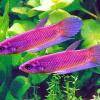 Giant
Giant  Betta
Betta  Slender
Slender 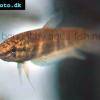 Betta
Betta 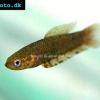 Brown’s
Brown’s  Snakehead
Snakehead  Wine
Wine  Edith’s
Edith’s  Blue
Blue  Betta
Betta 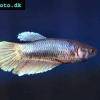 Peaceful
Peaceful  Kapaus
Kapaus  Eyespot
Eyespot  Spotted
Spotted  Forest
Forest  Schaller’s
Schaller’s  Siamese
Siamese  Chukai
Chukai 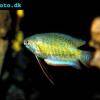 Banded
Banded  Dwarf
Dwarf  Frail
Frail  Paradise
Paradise 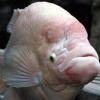 Giant
Giant  Giant
Giant  Licorice
Licorice  Chocolate
Chocolate  Honey
Honey  Thick
Thick  Pearl
Pearl  Moonlight
Moonlight  Snakeskin
Snakeskin  Blue
Blue